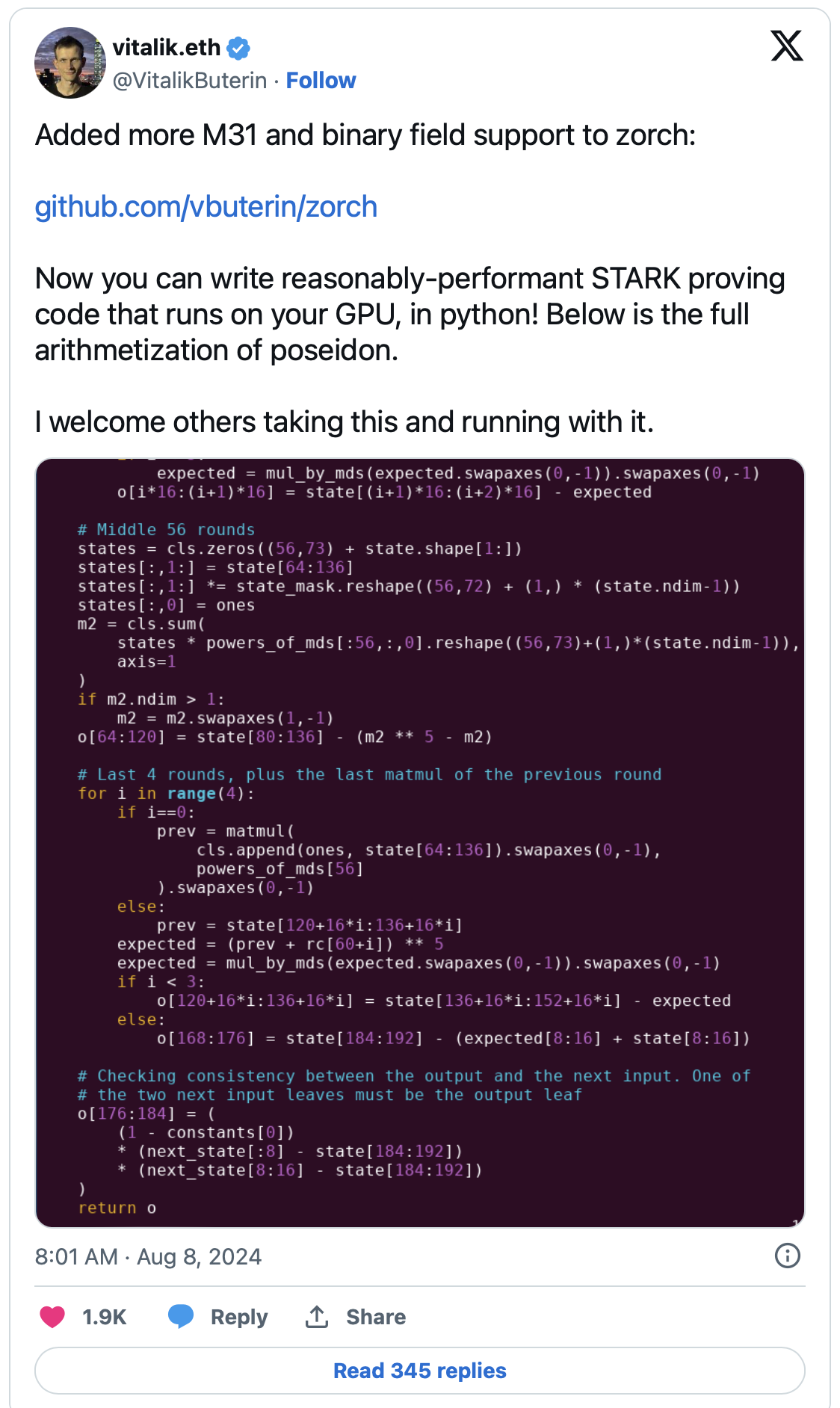Ethereum’s (ETH) upcoming significant technical update has been clarified by the altcoin king’s co-founder Vitalik Buterin. A mistaken tweet indicated that Ethereum’s M31 binary statelayer would transition from 16-bit to 32-bit, but Buterin clarified that the change is actually from 64-bit to 32-bit.
An Important Moment in Ethereum’s Development
This significant correction by Buterin will accelerate proofs on the Ethereum network and improve the overall performance of the network.

As part of efforts to increase the efficiency of the Ethereum network, developers can now write STARK proof codes running on GPUs in Python using the zorch library. This is seen as a step that will advance Ethereum’s technical capabilities by providing developers with more flexibility and efficiency.
ETH Continues to Struggle
Despite technological advances, Ethereum’s core asset ETH has continued to struggle in recent months. By 2024, Ethereum’s real-world use cases have decreased, and its price has significantly dropped. The poor performance following the launch of the spot ETF in the US has made Ethereum’s future more uncertain. Throughout the year, ETH has continued to face a situation indicating a lack of real use or demand.
Technical improvements are expected to contribute to making the network more scalable and efficient, but it is clear that these innovations must result in practical applications and price recovery. While the Ethereum community believes that technical developments will contribute to the development of a more robust network, the real test will be whether these advancements lead to practical applications and price recovery.
The coming months will be critical for Ethereum’s efforts to overcome its challenges and regain its position in the cryptocurrency market. As the Ethereum network continues to develop technically, innovative solutions and real-world applications need to be developed to improve price performance.

 Türkçe
Türkçe Español
Español









